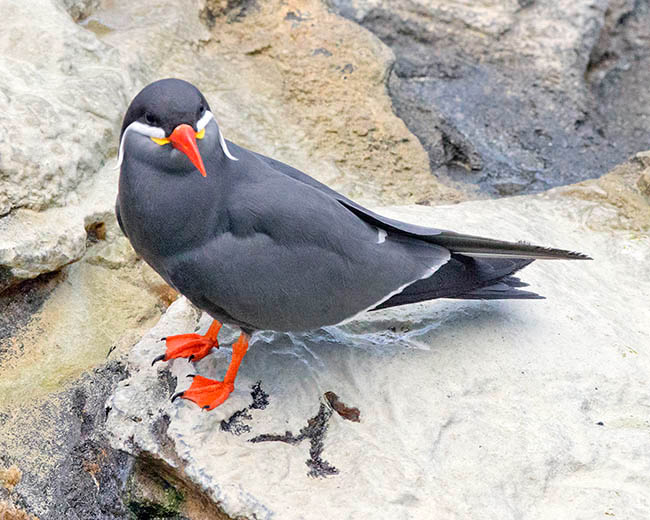The Inca Tern (Larosterna inca) is a unique seabird with a distinctive white mustache that is found primarily in the coastal regions of Peru and Chile. It is a medium-sized tern with a gray body, black cap, and white underparts. The Inca Tern is known for its playful behavior and its acrobatic flight displays.

Description
- Size: The Inca Tern is about 35-45 cm (14-18 in) in length and has a wingspan of 70-85 cm (28-33 in).
- Plumage: The body is light gray, with a darker head and chest. The wings are darker gray with white tips. The face has a distinctive white mustache, and the beak and legs are orange-yellow.
- Vocalizations: The Inca Tern has a loud, high-pitched call.
Behavior
- Diet: The Inca Tern feeds on small fish, squid, crustaceans, and other marine invertebrates. It hunts by hovering over the water and then diving down to catch its prey.
- Reproduction: The Inca Tern breeds from May to December. It nests on cliffs and rocky shores, laying 1-2 eggs. Both parents incubate the eggs and care for the chicks.
- Social behavior: The Inca Tern is a social bird and often gathers in large colonies. It is also known to follow fishing boats and whales, hoping to scavenge scraps of food.
Conservation status
- The Inca Tern is classified as “Least Concern” by the IUCN Red List.
- However, the population is decreasing due to habitat loss, pollution, and overfishing.
Interesting facts
- The white mustache of the Inca Tern is thought to play a role in mate attraction and social dominance.
- The Inca Tern is an excellent flyer and can often be seen soaring and diving over the water.
- The Inca Tern is an important part of the coastal ecosystem and helps to control populations of fish and other marine invertebrates.
Conclusion
The Inca Tern is a fascinating and beautiful bird that is an important part of the coastal ecosystem. Conservation efforts are needed to protect its habitat and ensure its survival.





